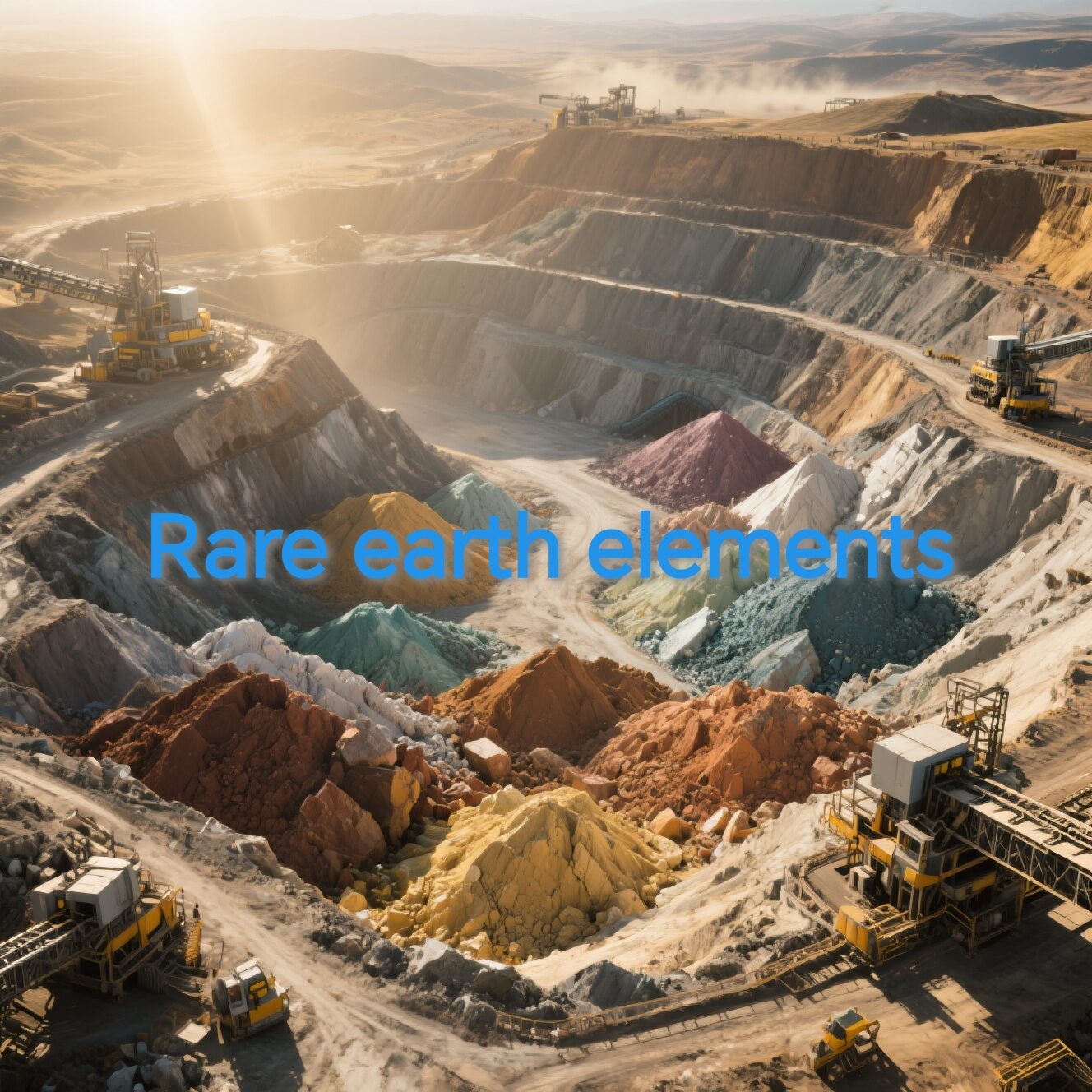Lanthanides, a group of 15 rare earth elements with atomic numbers between 57 and 71, have emerged as promising micronutrients in agriculture. They challenge long-held assumptions about their biological insignificance. Although their exact mechanisms in plants are still being explored, groundbreaking research from MIT has revealed how these elements interact with plant systems, particularly enhancing chlorophyll function and stress resilience. This article explores the current understanding of, applications for, and future prospects of lanthanides in agriculture, emphasizing their potential to transform crop productivity and sustainability.
Current Applications and Knowledge Gaps
Globally, lanthanide-based fertilizers are applied to over 5 million hectares annually, with China leading the way with approximately 4 million hectares per year, accounting for nearly 80% of global usage. Despite their widespread use, critical knowledge gaps persist.
- Plant Uptake Mechanisms: How do plants absorb lanthanides from soil or applied solutions?
- Tissue Distribution: How and where are these elements distributed within plant tissues?
- Molecular Interactions: Which biological processes do lanthanides influence at the molecular level?
- Optimization: What are the optimal application methods, concentrations, and environmental conditions for efficacy?
Giorgio Rizzo, a postdoctoral researcher at MIT and lead author of a study in the Journal of the American Chemical Society, remarks: “Lanthanides were considered biologically irrelevant, but agricultural practices, especially in China, have demonstrated their benefits. Now, science is catching up to explain why.”
Breakthrough Discoveries: Chlorophyll Modification and UV Protection
The MIT research team’s findings offer unprecedented insights:
- Chlorophyll Structural Enhancement: Lanthanides can replace magnesium at the center of chlorophyll molecules, thereby stabilizing their structure and preventing degradation. This “re-greening” effect restores the optical properties of damaged chlorophyll. Larger lanthanides, such as lanthanum, demonstrate superior stabilization. Laboratory experiments demonstrated a 30%-40% reduction in chlorophyll degradation rates compared to untreated plants under stress conditions.UV Stress Resistance: Nanoscale lanthanide seed treatments improve UV tolerance and maintain photosynthetic efficiency under high UV conditions. This protection persists throughout plant development, from seedling to maturity. Field trials revealed a 20% increase in photosynthetic efficiency and a 15% reduction in leaf damage in UV-exposed crops treated with lanthanides. As Associate Professor Benedetto Marelli explains: “Lanthanides accumulate primarily in the roots, but they reach the leaves and integrate into newly formed chlorophyll molecules.“
Real-World Success Cases
Lanthanide applications have demonstrated tangible success in various regions and with different crops.
- China’s Wheat Revolution: In Hebei Province, farmers who applied lanthanide-based fertilizers to winter wheat reported yield increases of 12-15% compared to conventional practices. Notably, treated fields showed enhanced resistance to UV radiation during peak sunlight seasons, reducing crop losses by up to 20%.
- High-Altitude Success in Peru: Lanthanide seed treatments were tested on potato crops in the Andean Mountains, where intense UV radiation poses a significant threat. The intervention resulted in a 25% reduction in leaf burn and a 10% increase in yield, which is crucial for smallholder farmers who face harsh environmental conditions.
- Soybean Production in Argentina: A large-scale trial in the Pampas region revealed that soybeans treated with lanthanides achieved 11% higher yields and withstood prolonged drought periods. Additionally, farmers reduced their reliance on chemical UV protectants by 40%, lowering costs and environmental impact.
Agricultural Implications and Benefits
These discoveries unlock multiple transformative possibilities.
- Yield Enhancement:
- Improved chlorophyll stability boosts photosynthetic efficiency, which could increase crop yields. Pilot studies have reported yield increases of 10-15% for chickpeas, 12% for barley, 8-10% for corn, and 11% for soybeans when treated with lanthanides.
- Low-concentration applications (e.g., 0.1–1 ppm of lanthanum or cerium) minimize toxicity risks.
- Stress Resilience:
- Novel protection against UV radiation damage is crucial for high-UV environments, such as mountainous regions or areas with ozone depletion.
- It is a safer alternative to traditional agrochemical UV protectants, which can be toxic. Comparative analyses showed that lanthanide treatments reduced reliance on conventional protectants by up to 40%, lowering environmental toxicity.
- Economic and Environmental Considerations:
- Utilization of low-value lanthanides (e.g., lanthanum) optimizes rare earth element supply chains. Lanthanum accounts for 25-30% of global rare earth production and is often considered a byproduct.
- Seed treatment methods reduce environmental impact compared to soil applications by requiring up to 70% lower total lanthanide doses per plant and minimizing leaching risks.
Optimized Application Methods:
- The MIT study promotes seed treatment as a revolutionary approach.
- Direct application of nanoscale doses (e.g., 10-50 nanograms per seed) ensures systemic distribution throughout developing plants.
- This method minimizes environmental leaching and enhances cost-effectiveness. Cost-benefit analyses estimated a 25%-30% reduction in overall application costs compared to traditional soil or foliar spraying.
Future Research Directions
Ongoing investigations focus on:
- Scaling findings to field and greenhouse conditions across diverse climates.
- Testing the effects on additional crop species, such as rice, wheat, and tomatoes.
- Exploring interactions with other biomolecules (e.g., enzymes) to identify potential synergistic or antagonistic effects.
- Developing precise application protocols (e.g., optimal timing, pH ranges, and soil types).
- Assessing potential human health and ecological impacts through long-term toxicity studies and ecosystem monitoring.
Conclusion
MIT’s research is a pivotal milestone offering the first mechanistic understanding of how lanthanides enhance chlorophyll function and UV resistance in plants. These advancements promise:
- Improved crop yields through photosynthetic optimization, which could contribute an additional 50 million tons to global food production annually.Novel stress protection mechanisms for climate-resilient agriculture.
- Sustainable alternatives to conventional agrochemicals that reduce reliance on toxic chemicals by 30-40%.
- Strategic utilization of rare earth resources repurposes low-value elements for high-impact applications.
As Professor Marelli concludes: “This work is crucial for optimizing lanthanide applications in agriculture, especially as climate challenges threaten global food security.”Supported by the MIT Climate Grand Challenge and the Office of Naval Research, this research underscores the strategic importance of lanthanides for both agricultural innovation and national security interests.









